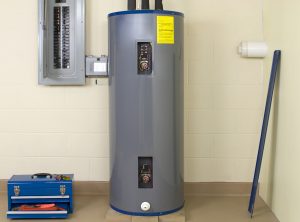Your tank water heater is one of the most important appliances in your home, quietly working behind the scenes to deliver hot water for showers, dishwashing, laundry, and more.
While it’s always smart to schedule professional water heater maintenance annually, there are several easy, homeowner-friendly tasks you can do in between service calls to extend the life of your water heater and help prevent costly breakdowns.
1. Check the Temperature Setting
The factory default setting for most tank water heaters is around 140°F, but that’s often hotter than necessary—and it can increase your energy bills and pose a scalding risk. For most households, 120°F is a safe and energy-efficient temperature. You can usually adjust the setting using a dial on the thermostat (found behind an access panel for electric models or near the gas valve for gas units).
Lowering the temperature:
- Reduces energy consumption
- Prevents overheating and premature tank wear
- Lowers the risk of burns, especially for children or elderly residents
2. Inspect for Leaks or Corrosion
Every month or so, take a few minutes to visually inspect your water heater. Look for signs of:
- Water pooling at the base
- Rust or corrosion on the tank or pipes
- Moisture around fittings or valves
Catching these early warning signs could save you from serious water damage or a complete system failure. If you spot a leak or see corrosion forming, it’s time to call in our team of professionals right away.
3. Flush the Tank Annually
Flushing your tank once a year helps prevent mineral buildup from hard water. Step-by-step flushing guide:
- Turn off power to the unit (electric) or set the gas valve to “pilot” (gas).
- Shut off the cold water supply valve.
- Connect a garden hose to the drain valve at the bottom of the tank.
- Run the hose to a safe drainage location (outside or into a floor drain).
- Open the drain valve and allow the tank to empty completely.
- Once drained, open the cold water supply for a minute or two to flush out remaining sediment.
- Close the drain valve, remove the hose, and refill the tank before restoring power or relighting the pilot light.
If you’re not comfortable with this process, one of our expert plumbers can perform the flush as part of routine maintenance.
4. Insulate the Tank and Pipes
Adding insulation to your tank (if it’s in a garage, basement, or other unheated space) can help reduce standby heat loss. You can purchase a water heater blanket kit and install it yourself, making sure not to cover controls or vents.
5. Test the Temperature and Pressure Relief (T&P) Valve
The T&P valve is a crucial safety feature that prevents pressure buildup inside your tank. To test it:
- Locate the valve—usually on the top or side of the tank.
- Place a bucket underneath and carefully lift the valve’s lever.
- You should hear a rush of air or see water discharge.
- Let go and it should snap back into place, stopping the flow.
- If it doesn’t release water, leaks afterward, or feels stuck, the valve may need to be replaced.
Contact Affinity Gas Services today to schedule an appointment for water softener installation in Gainesville, FL with our professionals. We’re “The Gas Efficiency Experts.”

